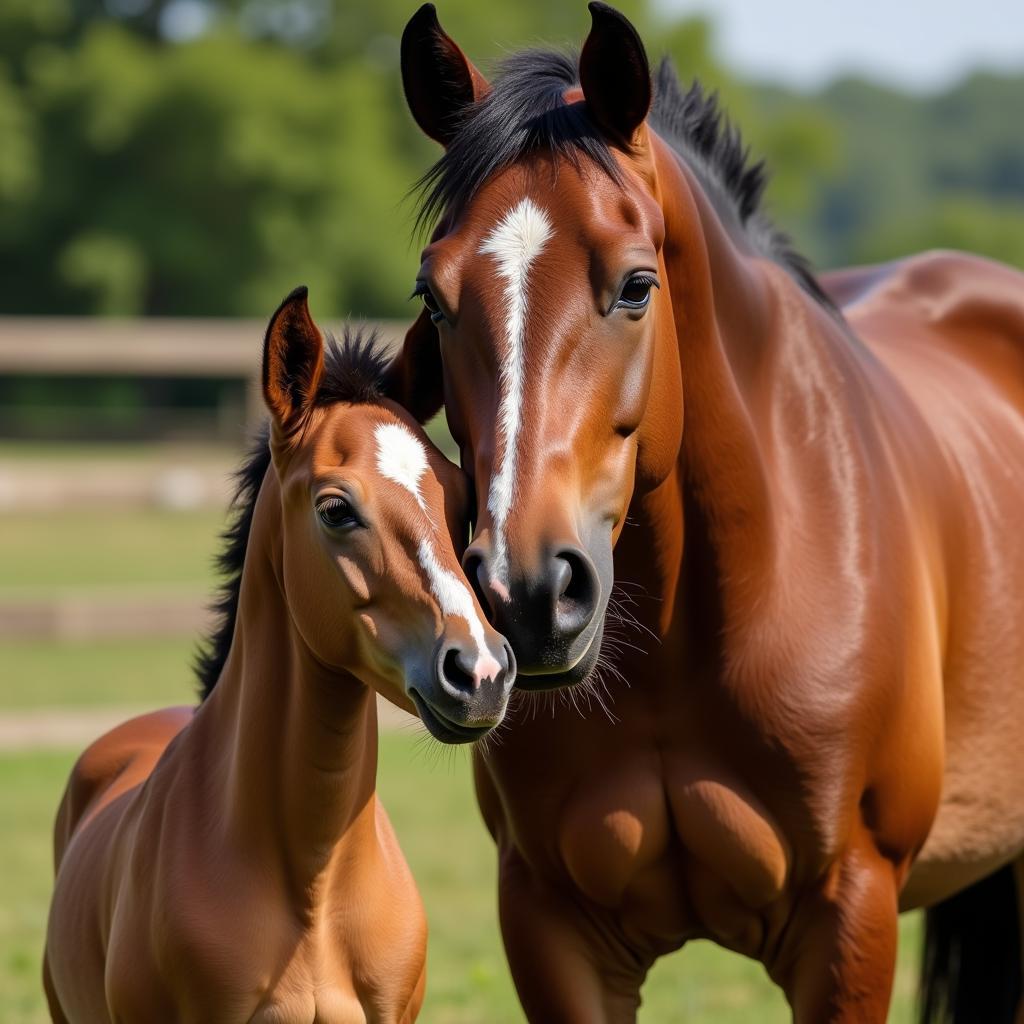The term “Sex With Horse Female” often arises from curiosity or a desire to understand equine reproduction. This article aims to provide accurate and comprehensive information about the natural breeding process in horses, addressing the biological and behavioral aspects while emphasizing ethical considerations and responsible horse ownership. We’ll explore the intricacies of mare reproductive cycles, stallion behavior, and the importance of responsible breeding practices for the well-being of these magnificent animals.
The Mare’s Reproductive Cycle
Understanding the mare’s reproductive cycle is crucial for successful breeding. Mares are seasonally polyestrous, meaning they cycle multiple times during the breeding season, which typically spans spring and summer. Their estrous cycle, the period between one ovulation and the next, lasts approximately 21 days. During estrus, also known as “heat,” the mare is receptive to the stallion and ready to breed. This period lasts around 5-7 days, followed by diestrus, a period of non-receptivity. Knowing these cyclical changes is vital for timing breeding effectively.
A key factor influencing the mare’s cycle is the length of daylight. Increased daylight hours stimulate hormonal changes, initiating the breeding season. Hormonal fluctuations influence the mare’s behavior, physical signs, and receptiveness to the stallion. Recognizing these changes is essential for successful breeding management.
Stallion Behavior and Breeding
Stallions exhibit specific behaviors during the breeding season, often becoming more vocal and displaying courtship rituals like nudging, nipping, and smelling the mare. These behaviors are driven by hormonal changes and serve to assess the mare’s receptivity. When a mare is in estrus, she will display specific behaviors signaling her readiness to breed, such as raising her tail, winking her vulva, and urinating frequently. Understanding these subtle cues is essential for successful breeding and ensuring the safety of both animals. It’s crucial to remember that stallions are powerful animals and should be handled with caution, especially during the breeding season.
Experienced horse breeders and veterinarians play a vital role in managing the breeding process. They ensure the safety of both the mare and the stallion, while also maximizing the chances of successful conception. Artificial insemination (AI) is a commonly used technique in modern horse breeding, offering several advantages such as disease control and access to superior genetics.
It is essential to remember that “horse and donkeysex,” while sometimes discussed due to the creation of mules, is a different topic and involves distinct considerations.
Responsible Breeding Practices
Ethical considerations are paramount when it comes to horse breeding. Overbreeding can lead to unwanted horses, contributing to the already significant problem of horse neglect and abandonment. Responsible breeding involves careful selection of breeding stock based on temperament, conformation, and health, as well as a commitment to the long-term care of the resulting foals.
Understanding horse terms to know, such as gestation periods and foal development, is crucial for responsible ownership. You can use our gestation calculator horse to determine the expected foaling date. It’s also important to research resources like “horses having sex with horses” to gain a complete understanding of the process. This involves providing proper nutrition, healthcare, and training to ensure the well-being of the animals.
 Healthy Mare and Foal
Healthy Mare and Foal
Conclusion
Understanding the complexities of equine reproduction, including the mare’s cycle, stallion behavior, and responsible breeding practices, is crucial for anyone involved with horses. The term “sex with horse female” should prompt a deeper exploration of the natural breeding process, emphasizing the importance of ethical considerations and responsible horse ownership. By prioritizing the welfare of these magnificent animals, we can ensure their continued health and well-being for generations to come. For more information about young horses, check out our article on baby horse crossword clue.
FAQ
- How long is a mare’s estrous cycle? (Approximately 21 days)
- What is the breeding season for horses? (Typically spring and summer)
- What are some signs a mare is in heat? (Raised tail, winking vulva, frequent urination)
- What is artificial insemination (AI) in horses? (A technique used for breeding horses by artificially introducing sperm into the mare’s reproductive tract)
- Why is responsible breeding important? (To prevent overpopulation and ensure the well-being of horses)
For further assistance, please contact us at Phone Number: 0772127271, Email: [email protected] Or visit us at: QGM2+WX2, Vị Trung, Vị Thuỷ, Hậu Giang, Việt Nam. We have a 24/7 customer service team.